Numbers tell a compelling story at TriMark USA, which since 2014 has held the top spot on FE&S’ Distribution Giants ranking of the nation’s largest foodservice equipment and supplies dealers. That year, the South Attleboro, Mass.-based, company reported prior-year sales of $944 million, overtaking longtime leader Edward Don & Co. The same year, it became the first E&S dealership to pass the $1 billion milestone and has since continued to widen the gap between itself and many of its competitors.
TriMark USA now sits within a just few days’ work of hitting its next revenue milestone, $2 billion. Why a few days? Because it missed that mark by just $30 million last year, and because it now sells some $7 million worth of foodservice equipment, supplies and design services every single business day.
 Photography by Scott Cook Photography
Photography by Scott Cook Photography
Other numbers that help to tell the TriMark story: 14 acquisitions over 2 decades; 14 divisions; 3,100 employees, including 900 in sales; 66 facilities with more than 3 million square feet of leased space; 270 loading docks; 200 delivery trucks. In 2018, the company worked with customers to open 4,000 foodservice establishments.
Far and away the largest company to earn recognition as an FE&S Dealer of the Year, TriMark’s route to achieving such numbers has been an unconventional one. Namely, its transformation from a family-owned, regional dealership with sales of $50 million in 1998 into a national, $2 billion juggernaut would likely have been unthinkable without the not-so-secret sauce of private-equity funding. In fact, the company is now on its fourth private-equity sponsor: Centerbridge Partners LP acquired TriMark USA from Warburg Pincus in August 2017.
Charged by some with simply acquiring its way to the top, TriMark has, indeed, used its various pots of private-equity funding to fuel the buy side of a buy-and-build growth strategy. Acquisitions have been central to its revenue gains, to its ability to achieve scale and to fill in regional gaps in its drive to achieve national coverage.
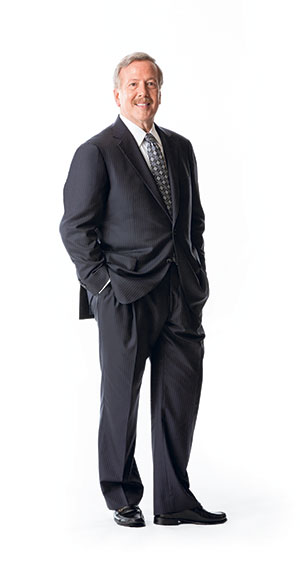 Jerry Hyman, CEO, TriMark USA The build side of TriMark’s growth strategy, however, is also compelling. Having ample capital with which to acquire companies is one thing. But buying the right companies at the right time, retaining talent, maximizing the potential of each acquisition and adding value for customers while building a cohesive corporate entity is quite another. And achieving organic growth at a rate that has consistently equaled that of acquisitive growth is quite another still.
Jerry Hyman, CEO, TriMark USA The build side of TriMark’s growth strategy, however, is also compelling. Having ample capital with which to acquire companies is one thing. But buying the right companies at the right time, retaining talent, maximizing the potential of each acquisition and adding value for customers while building a cohesive corporate entity is quite another. And achieving organic growth at a rate that has consistently equaled that of acquisitive growth is quite another still.
Under the leadership of Jerry Hyman, who has served as CEO since 2005, TriMark USA has done just that. Its story is multifaceted and continuing to evolve. It’s one shaped by clear vision, a people-first focus and a disciplined strategy. And it begins well before TriMark even became TriMark.
Family-Business Roots
Like so many dealers in the industry, TriMark USA’s roots trace back to a hardworking entrepreneur who built a small family business from scratch. His name was Harry Halpern.
In 1947, Halpern started selling brewing supplies out of the back of a station wagon in North Smithfield, R.I., gradually expanding to offer a full line of equipment and supply items. His company, known as United Restaurant Equipment Company, continued to grow into its second generation of family leadership.
Upon Harry’s retirement, his son, Bob Halpern, became president and his sons-in-law, Norman Bean and Bernie Goldberg, assumed senior management positions. They continued to expand the company’s reach from local Rhode Island to regional New England.
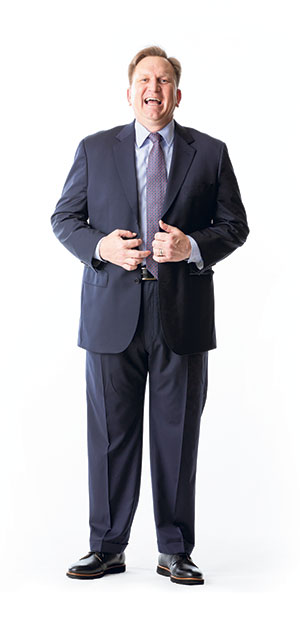 Scott McDaniel, President, TriMark United East Ultimately, that second-generation leadership team would make two key decisions that would set the dealership on its trajectory toward national industry leadership. First, in 1981, Bob Halpern hired then-26-year-old Jerry Hyman to work a counter position in the company’s showroom.
Scott McDaniel, President, TriMark United East Ultimately, that second-generation leadership team would make two key decisions that would set the dealership on its trajectory toward national industry leadership. First, in 1981, Bob Halpern hired then-26-year-old Jerry Hyman to work a counter position in the company’s showroom.
Hyman, a 1977 Cornell University graduate with a degree in psychology, seemed a bit of an odd fit. But he’d gained experience as a bartender in college and, finding few career opportunities in psychology, had accepted an offer from the bar’s owner to be a full “sweat-equity” partner. Together, they opened multiple high-volume upstate New York college town bars. Four years in, however, Hyman decided to exit the fast-lane bar lifestyle. He sold his 50 percent share, moved home and looked for a plan B.
It came in the form of United Restaurant Equipment Company, which, as the company’s territory continued to expand, would later be renamed United East.
“It occurred to me that what I liked most about owning those bars was the process of opening new ones,” Hyman says. “I had worked with a little restaurant supply company in upstate New York to do so and I thought that was pretty cool, so I went looking for a job in a company like that. I found Bob Halpern’s dealership, which had a showroom position open. Bob looked at my resume and said, ‘You’ve got a college degree, you’ve run your own successful bar businesses and you want to work at the counter in my showroom for minimum wage?’ I said yes and that this was what I wanted to do. I assured him that if he hired me, he’d never regret it.”
Hyman set about learning the business from the ground up and by 1998 had climbed the ladder to become United East’s vice president of sales. That year, with revenues hitting $50 million, the family made a second critical business decision. It agreed to sell a majority stake in the company to Bradford Equities Management LLC. At the closing of the sale Bob Halpern became CEO and Hyman was promoted to president. Prior to the closing Goldberg retired.
Of that first sale to a private equity firm, Hyman says the immediate goal was to do an industry rollup, with United East as the platform. The vision, even then, was to build something that didn’t yet exist in the industry.
“The idea was to create a national company capable of servicing chains in any geography while maintaining the strength and entrepreneurialism of a successful regional dealer,” Hyman says. “We planned to run the company in a decentralized fashion and to never lose what made the companies we chose to acquire great while building the framework for a national organization.”
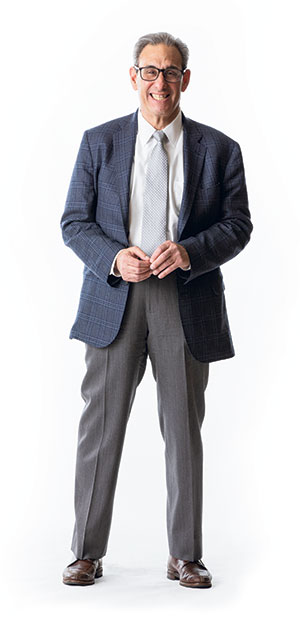 Mike Siegel President, TriMark Marlinn Over the next seven years, with Bradford Equities as funding partner, the company acquired four dealerships, leaving little doubt about its intention to go national. They included Foodcraft Equipment Co. in Winston-Salem, N.C.; Marlinn Restaurant Supply Co. in Chicago; and Raygal Design Associates and RobertClark, both in Irvine, Calif.
Mike Siegel President, TriMark Marlinn Over the next seven years, with Bradford Equities as funding partner, the company acquired four dealerships, leaving little doubt about its intention to go national. They included Foodcraft Equipment Co. in Winston-Salem, N.C.; Marlinn Restaurant Supply Co. in Chicago; and Raygal Design Associates and RobertClark, both in Irvine, Calif.
Within those seven years, TriMark’s sales grew from $50 million to $250 million. But the Bradford era was transformative for other reasons as well. In August 2000, the company’s headquarters relocated to South Attleboro, Mass., and in 2001, the name TriMark USA was introduced to the industry, with United East then being one of five divisions. Toward the end of Bradford’s ownership, Halpern retired and Bean left the company. Hyman, the only non-family senior leader, was named CEO in 2005.
As for the TriMark USA name, it is at once descriptive and aspirational: Tri reflects the company’s three primary service pillars of equipment, supplies and design, while Mark reflects its goal of setting the benchmark for excellence in each. USA states the obvious — the desire to be a national player.
“We really wanted to set the mark for equipment, supplies and design,” explains Hyman. “We also wanted to continue to acquire more companies and needed an umbrella name, a common brand. The idea was to buy all these other companies and put the TriMark brand in front of their names.”
Acquiring Strength
TriMark has now reached its goals with multiple additional acquisitions made during three subsequent private-equity partnerships. Audax Group purchased TriMark USA in late 2006 and, over seven years, acquired six companies and grew sales to slightly less than $1 billion. The company then sold to Warburg Pincus in August of 2014, which would tally three more acquisitions and grow annual sales by another $800 million. Within months of its August 2017 sale to Centerbridge Partners, one additional acquisition had been made.
 Harry Gallins President, TriMark FoodcraftFor acquired companies, having the TriMark brand in front of their name and the company’s vision and resources behind it has provided opportunities to grow and better serve customers. Many have expanded product lines, built new warehouses and test kitchens, and added key personnel. All have gained purchasing power, economies of scale and ready access to TriMark corporate’s considerable administrative, financial, legal and human resources support.
Harry Gallins President, TriMark FoodcraftFor acquired companies, having the TriMark brand in front of their name and the company’s vision and resources behind it has provided opportunities to grow and better serve customers. Many have expanded product lines, built new warehouses and test kitchens, and added key personnel. All have gained purchasing power, economies of scale and ready access to TriMark corporate’s considerable administrative, financial, legal and human resources support.
Almost without exception, they’ve enjoyed a best-of-both-worlds post-acquisition reality: the benefits that come from being part of a well-funded national organization and the freedom to continue to operate as customer-centric, entrepreneurial leaders in their local and regional markets.
In fact, that’s exactly what TriMark expects. It’s part and parcel of the disciplined acquisition approach to which Hyman adheres, regardless of who the private-equity partner at the time may be.
“One of the reasons that we’ve been so successful is our very specific criteria for acquisitions,” Hyman says. “It’s something I’ve never wavered from, which is unusual for private-equity guys. Sometimes, they just buy anything that’s for sale. We don’t do that.”
The criteria are simple and hierarchical, Hyman says. Specifically, any company considered for acquisition must:
- Be well run and profitable.
 Steve Fishman, Executive Vice President, TriMark SS Kemp and Vice Presidentr of Vendor Programs, TriMark USA
Steve Fishman, Executive Vice President, TriMark SS Kemp and Vice Presidentr of Vendor Programs, TriMark USA - Have management that’s willing to stay on and buy into TriMark’s vision.
- Pass the culture test. “They have to have the same philosophy that we do as to how they treat customers and their employees,” Hyman says. “Our philosophy is that the customer always comes first and that without good, happy employees, there’s no company. It’s very hard to change the culture in a company. Sometimes, the only way to do that is to change the leadership — but that would violate our criteria regarding management staying in place, so it’s not an option.”
- Have a compelling business case for acquisition. “It might be geography, market segment or product category-related, “Hyman notes. “But there has to be a strong reason, beyond the fact that they’re for sale.”
Purchases made since signing on with private equity in 1998 include some smaller, strategically selected companies as well as some of the industry’s strongest regional players. Among them are four previously recognized FE&S Dealer of the Year recipients in their own right: The Gill Company, S.S. Kemp, R.W. Smith and Hockenbergs. United East, the original platform from which TriMark USA grew, was also the FE&S Dealer of the Year in 2003.
Additional regional and market segment power plays include Strategic Restaurant Equipment and Supply in Lewisville, Texas, itself a rollup of six dealerships that at the time also had private-equity ownership; cash-and-carry specialist Economy Restaurant Fixtures and its internet division Big Tray, both in San Francisco; design-build specialist Federighi Design in Richmond, Calif.; and Landover, Md.-based Adams-Burch, one of the oldest dealers in the country and a major force in the mid-Atlantic market.
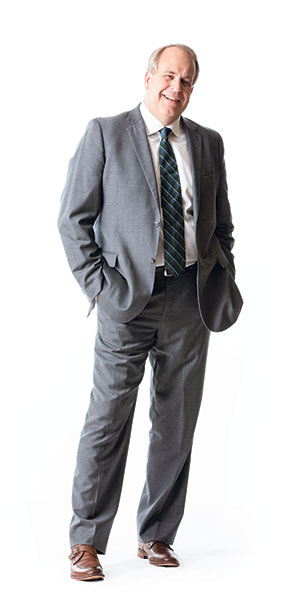 Tom Wienclaw, Executive Vice President, Midwest Region, TriMark USA The most recent acquisition, Los Angeles-based Chefs’ Toys, is both a regional and a business-model power play. Founded in 1988, the company operates eight retail superstores in Southern California and offers a range of services, including design, installation, construction and e-commerce. A bit of an outlier as a retail specialist, it’s just one of three business units (along with Big Tray and ISI, a service company that came with the Strategic acquisition) to continue to go to market without the TriMark brand name.
Tom Wienclaw, Executive Vice President, Midwest Region, TriMark USA The most recent acquisition, Los Angeles-based Chefs’ Toys, is both a regional and a business-model power play. Founded in 1988, the company operates eight retail superstores in Southern California and offers a range of services, including design, installation, construction and e-commerce. A bit of an outlier as a retail specialist, it’s just one of three business units (along with Big Tray and ISI, a service company that came with the Strategic acquisition) to continue to go to market without the TriMark brand name.
Growing Organically
To be sure, TriMark’s acquisitions have netted rapid revenue and footprint gains. But of the company’s nearly $1.9 billion in annual revenue growth since 1998, $975 million has been achieved organically.
“Our approach to growth has always been as disciplined as our approach to acquisitions,” Hyman says. “In a good year, our industry as a whole grows about 3 percent. TriMark’s organic growth has always outperformed industry growth by a factor of two to three times.”
Three of its largest divisions — Marlinn, SS Kemp and Strategic — are cases in point.
Mike Siegel, president of TriMark Marlinn, grew up in the Chicago-based dealership that his family founded in 1946. By the time he joined the company in 1976, the business was generating around $3.5 million in sales. By 1998, the year it was acquired by TriMark, sales had grown to roughly $30 million. In its first 10 years as a TriMark division, Marlinn added another $120 million in annual sales to cross the $150 million mark, much of it coming from the addition of equipment.
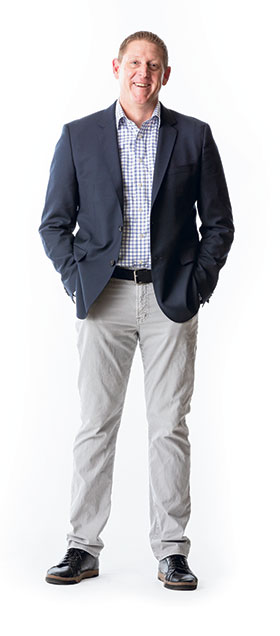 Chris Homewood, President, TriMark Distribution and Retail West “We were historically 90 percent distribution of smallwares, glass, china and disposables. When we were acquired, we were trying to get into heavy equipment, which is very capital-intensive,” Siegel says. “The acquisition by a well-funded company put us in a much better position to do that. We’re now 65 percent equipment and 35 percent supplies, china, etc. Across the board at TriMark, that’s a real advantage in terms of our ability to take market share, and it delivers real value to our customers because we can provide products and expertise in everything from smallwares and disposables to heavy equipment.”
Chris Homewood, President, TriMark Distribution and Retail West “We were historically 90 percent distribution of smallwares, glass, china and disposables. When we were acquired, we were trying to get into heavy equipment, which is very capital-intensive,” Siegel says. “The acquisition by a well-funded company put us in a much better position to do that. We’re now 65 percent equipment and 35 percent supplies, china, etc. Across the board at TriMark, that’s a real advantage in terms of our ability to take market share, and it delivers real value to our customers because we can provide products and expertise in everything from smallwares and disposables to heavy equipment.”
Cleveland-based TriMark SS Kemp, a full-service dealership founded as SS Kemp & Co. in 1926 and purchased by the Fishman family in 1978, has also achieved impressive organic growth. In 2004, the year Tom Wienclaw came on board as chief financial officer, SS Kemp had sales of roughly $40 million. In 2007, he helped the family through the sale to TriMark and in 2013, when Mark and Steve Fishman moved into other leadership positions, Wienclaw was named president of TriMark SS Kemp.
“When I started here, we were a very mom-and-pop company,” Wienclaw says. “Since then, we have grown sales more than 400 percent, and all of it has been organic. It has been almost entirely about taking market share.”
In TriMark SS Kemp’s case, post-acquisition changes were minimal, adds Wienclaw, who now serves as executive vice president of TriMark’s Midwest Region. “That’s historically how TriMark has operated,” he says. “They buy well-run, profitable companies and let them do their own thing, providing them with the resources to be more successful. The one area where they did help us make a change was to add disposables. We never used to sell them, but today that’s probably a $15 million business for us.”
TriMark SS Kemp, which has three facilities in Ohio and one in Pennsylvania, now provides the full gamut of equipment and supply items, as well as complete design and installation services. Wienclaw says the division’s product mix is roughly two-thirds equipment and one-third supplies.
At TriMark Strategic, now the company’s largest division, revenues have doubled in the six years since its acquisition. At the time, Strategic was already the fifth-largest dealership in the country, with 2012 sales of $232 million estimated in the FE&S 2013 Distribution Giants study.
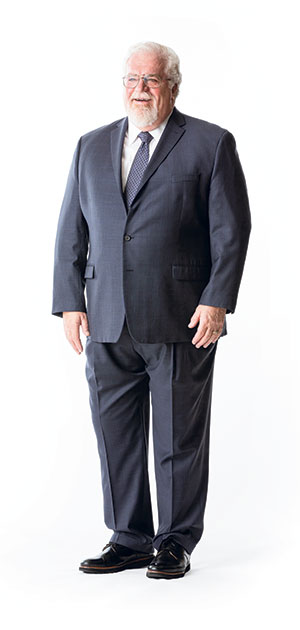 Marty Monnat President, TriMark Strategic and Executive Vice President, Southern Region, TriMark USA Marty Monnat, president of the division and executive vice president of TriMark’s Southern Region, says Strategic and TriMark were a synergistic fit. Both companies had been formed via rollups, and both had private-equity owners. Monnat, who spent several years on the manufacturing side prior to joining the ISI service company (later part of Strategic) in 2003, knew Hyman and several of the TriMark division presidents.
Marty Monnat President, TriMark Strategic and Executive Vice President, Southern Region, TriMark USA Marty Monnat, president of the division and executive vice president of TriMark’s Southern Region, says Strategic and TriMark were a synergistic fit. Both companies had been formed via rollups, and both had private-equity owners. Monnat, who spent several years on the manufacturing side prior to joining the ISI service company (later part of Strategic) in 2003, knew Hyman and several of the TriMark division presidents.
“The deal made sense,” Monnat says. “And it wasn’t just about being big. A very significant portion of Strategic’s business is in chains, so it strengthened TriMark’s position in that segment. We didn’t have any overlap in buildings and had very little overlap in customers. We blended together well, and it gave us access to the resources we needed to expand the business.”
Strategic has leveraged those resources. In addition to doubling sales volume, it has doubled its footprint, adding three new buildings in Georgia and one each in Dallas and Nashville. Its employee base has roughly doubled as well.
“With TriMark, we have the ability to hire and train new people, enabling us to go out and get new business,” Monnat says. “That’s critical because when you’re targeting chains, a customer can come to you with hundreds of stores. The dynamics change very quickly, and you have to be able to invest not only in physical infrastructure but in people, in training and in developing the kind of expertise it takes to service accounts at that level.”
TriMark’s approach to doing so is comprehensive and has earned the company long-standing relationships with leading QSR, fast-casual and casual-dining chains.
“We do some unique things,” Monnat says. “We support them with after-sale service, with asset management; we do all the design work for them both for new units and remodels; we help with openings and rollouts. It’s not just a transaction but a full value-added package. For one chain, we operate a call center. If a unit manager has a piece of equipment that needs service or they need a part or whatever the issue might be, they call that center and we handle it. We have the resources to provide an all-in-one solution.”
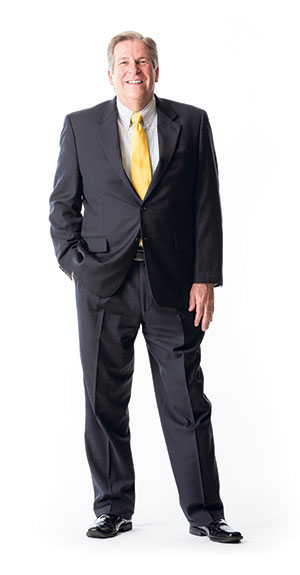 Kevin McClamroch, President, TriMark Adams-Burch While customer and product mix vary somewhat by division and region, Hyman says TriMark USA goes to market with a consistent strategy for both. “Our customer mix overall is 40 percent national account chains and 25 percent independent restaurants. The other 35 percent is comprised of business and industry, healthcare, the federal government, e-commerce, etc.,” he says. “We like that mix and are focused on taking share proportionally in those segments as we grow.”
Kevin McClamroch, President, TriMark Adams-Burch While customer and product mix vary somewhat by division and region, Hyman says TriMark USA goes to market with a consistent strategy for both. “Our customer mix overall is 40 percent national account chains and 25 percent independent restaurants. The other 35 percent is comprised of business and industry, healthcare, the federal government, e-commerce, etc.,” he says. “We like that mix and are focused on taking share proportionally in those segments as we grow.”
In terms of product mix, TriMark USA reports sales by category for 2018 as follows: heavy equipment, 50 percent; smallwares, 15 percent; tabletop, light equipment and paper/disposables, 10 percent each; jan/san, 3 percent; and furnishings, 2 percent. Hyman says the company broadly targets a mix of 70 percent equipment and projects and 30 percent supplies in part to provide protection against pure internet-play competitors.
It’s a mix that acquired companies may be required to adopt, adding lines and services if necessary. SS Kemp added disposables; Marlinn added heavy equipment; Adams-Burch is in the process of adding heavy equipment.
“They didn’t like to sell heavy equipment or projects,” Hyman says of Adams-Burch when it was acquired in 2017. “They were almost 100 percent smallwares, but we’re teaching them how to sell equipment. In fact, one of the reasons that they decided to sell the company was that they knew they should be selling equipment but didn’t have the knowledge or resources to do it on their own.”
As for internet-based e-commerce, some TriMark divisions are farther down that road than others, Hyman notes. Both Chef’s Toys and Big Tray, for example, have strong internet-based sales. But overall and at least for now, the company has kept its primary focus on providing business-to-business e-commerce platforms for its own customers.
People, Culture, Strategy
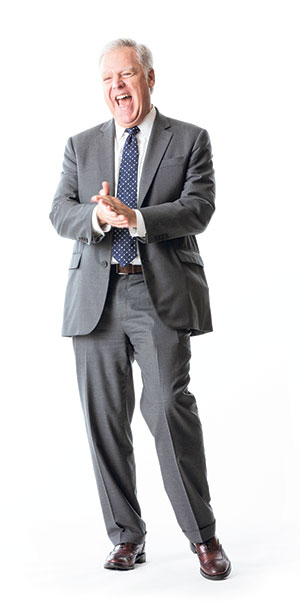 Joe Thibert, Executive Vice President, Eastern Region, TriMark USA Joe Thibert joined TriMark USA as president of TriMark United East in 2012. He’s the first of what is now a small handful of executives to have come into the company from the outside. But he wasn’t new to TriMark. Prior to joining the company, he’d served on its board. He was also founder and CEO of CAFCO Development Inc., a restaurant consulting and construction management business based in Boston.
Joe Thibert, Executive Vice President, Eastern Region, TriMark USA Joe Thibert joined TriMark USA as president of TriMark United East in 2012. He’s the first of what is now a small handful of executives to have come into the company from the outside. But he wasn’t new to TriMark. Prior to joining the company, he’d served on its board. He was also founder and CEO of CAFCO Development Inc., a restaurant consulting and construction management business based in Boston.
“All those years working to help restaurant operators succeed, TriMark was my most important B2B partner,” says Thibert, who has since been promoted to executive vice president of the Eastern Region. “Back in the ’80s, when Jerry Hyman was vice president of sales at United East, it was just a small company, but its commitment to customers was always so strong. It was the kind of business where, no matter what issue you might have, you could pick up the phone and call the president or the vice president. They’d take your call, hear you out and find a solution.”
Even in the face of dramatic growth, TriMark’s leaders all share a passion for being that same type of responsive, do-whatever-it-takes organization, Thibert notes. And innovation around people is a key focus.
“We all come at this from a people, culture, strategy standpoint — in that order,” Thibert says. “It’s a mantra around here, and our entire leadership team lives and breathes it. You have to get the right people in the right positions doing the right things. And you need to put them in a culture that supports, appreciates and celebrates that. Only then can you implement strategy. It’s something we’re acutely aware of at TriMark in part because of the very entrepreneurial nature of our organization. Ask any successful entrepreneur, and they’ll tell you that you can’t execute without really great people, so we put a big emphasis on that.”
Thibert adds that TriMark’s commitment to tapping the entrepreneurial spirit of its leadership team fosters a culture of innovation. New ideas are welcome and encouraged, and leaders are given the freedom to execute.
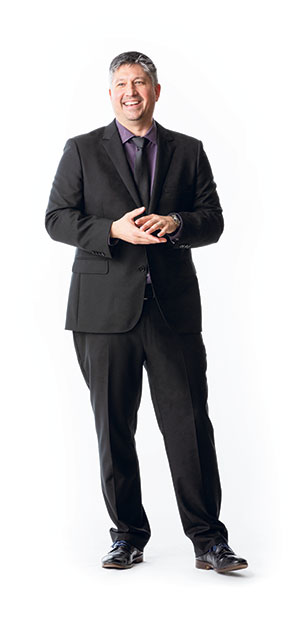 John Pawlowski, President, TriMark SS Kemp A case in point: One of Thibert’s pet projects at United East has been the TriMark Innovation Center, which opened last summer within Boston’s Innovation and Design Building. Not a showroom and not a test kitchen, it’s a unique venue that enables the TriMark team to engage with customers, add value and build relationships.
John Pawlowski, President, TriMark SS Kemp A case in point: One of Thibert’s pet projects at United East has been the TriMark Innovation Center, which opened last summer within Boston’s Innovation and Design Building. Not a showroom and not a test kitchen, it’s a unique venue that enables the TriMark team to engage with customers, add value and build relationships.
Recent events hosted at the Innovation Center include Readable Feast, a high-profile awards program and gala honoring New England cookbook authors, food styling workshops and creative business-coaching sessions. “There are a lot of ways that customers can brush up against our business and our people,” Thibert notes. “We’re committed to creating new and dynamic ways for them to do so. Our mission at the Innovation Center is to educate, entertain and inspire.”
Wienclaw adds that being people-first and customer-driven also hinges on ensuring that TriMark has the best and most well-trained people interacting with customers at all levels of the company.
“We’re a customer-driven selling organization, and we really focus on execution,” Wienclaw says. “We all understand that we need to do whatever we can to be very easy to deal with. As part of that, we also have a lot more people out in the field working face-to-face with customers, on jobs and in sales, than any other company. Customers appreciate that we’re trying to manage their business in front and alongside of them versus via the phone or computer, especially on job scenarios.”
The company also focuses intensely on management development, on building strong sales leadership and on planning for the future, Wienclaw says. “We’ve been fortunate that the management teams in our legacy companies have stayed on, but turnover will obviously and eventually happen,” he notes. “It’s happening now, with several division presidents retiring recently and new people coming in. We’ve planned for it and are making sure there are smooth transitions. And we’re doing a very thorough job making sure we bring the right people in, people with great experience, fresh ideas and who share our people, culture, strategy viewpoint. The last few hires have been external candidates, but there will be a combination of external and internal as we
move forward.”
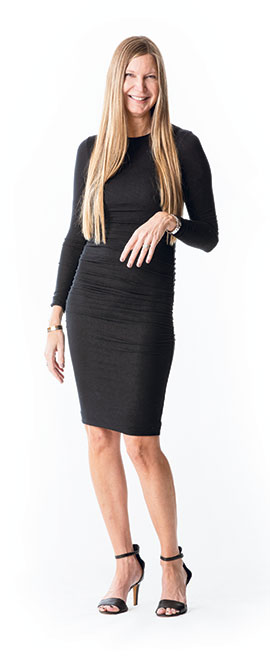 Laura Gill ,President, TriMark Gill Group People first — both customers and employees — is a philosophy that starts at the top. Hyman, who lists his cell phone number on his business card, says he’s committed to always being available to customers and employees. And as early as the interview process, employees receive the message that they — the people at every touchpoint in the organization — are the difference makers.
Laura Gill ,President, TriMark Gill Group People first — both customers and employees — is a philosophy that starts at the top. Hyman, who lists his cell phone number on his business card, says he’s committed to always being available to customers and employees. And as early as the interview process, employees receive the message that they — the people at every touchpoint in the organization — are the difference makers.
“Real product, pricing and service differentiation is increasingly tough to bring to market,” Hyman says. “All we really have to set ourselves apart is our people. To the restaurant owner or manager in Boston or Atlanta, it doesn’t matter that TriMark is a $2 billion company. What matters to him is the salesperson who calls on him and the driver who makes his delivery. It’s the person he calls in accounts receivable if he has a problem with his bill. It’s the warehouse worker who’s selecting the right products for
his order.”
TriMark’s willingness to invest in its people shone through at The NAFEM Show in February, during which Hyman addressed an army of more than 600 employees attending a company event. He updated them on the company’s performance and congratulated and thanked them for their contributions. And he underscored the reason that TriMark had made the significant investment to bring so many associates to an industry trade show: to enable them to study, learn and differentiate themselves — and TriMark — out in the marketplace.
Transforming for the Future
At The NAFEM Show event, Hyman also shared with employees some of the key strategies on which TriMark USA is now focused. From IT to management, training to supply chain to logistics, it in many ways is not business as usual. That’s because TriMark is making big moves to enhance its ability to better service customers, boost profitability and position itself for even more dramatic growth.
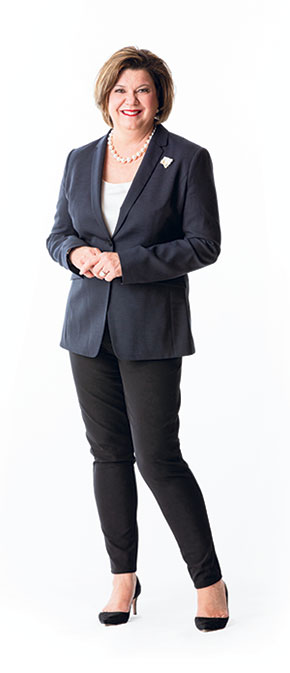 Kim Gill Rimsza Executive Vice President, Western Region, TriMark USA The first such move, made slightly more than two years ago, was a management restructuring. Having outgrown the practicality of all division presidents reporting directly to Hyman, TriMark implemented a new regional structure. Four division presidents were tapped to fill new executive vice president posts, each responsible for a region of the country. The EVPs are Kim Gill Rimsza, Western Region; Marty Monnat, Southern Region; Joe Thibert, Eastern Region; and Tom Wienclaw, Midwest Region.
Kim Gill Rimsza Executive Vice President, Western Region, TriMark USA The first such move, made slightly more than two years ago, was a management restructuring. Having outgrown the practicality of all division presidents reporting directly to Hyman, TriMark implemented a new regional structure. Four division presidents were tapped to fill new executive vice president posts, each responsible for a region of the country. The EVPs are Kim Gill Rimsza, Western Region; Marty Monnat, Southern Region; Joe Thibert, Eastern Region; and Tom Wienclaw, Midwest Region.
“We all came together and had a lot of discussions about what our management team should look like going forward,” Gill Rimsza says. “Ultimately, we agreed that restructuring around geography made sense. It allows us, as EVPs, to spend more time helping the business units in our regions to grow, to recognize and capitalize on opportunities.”
The EVP structure also helps give the divisions more of a voice, with their EVP as a conduit, and facilitates sharing of best practices. “We know that every division does something great,” Gill Rimsza says. “We lose if we can’t share that expertise with our sister divisions.”
Wienclaw adds that the new management structure is helping to better align divisions within a region. “We’re not operating in silos,” he says. “We’re providing a more consistent customer experience and a more consistent employee experience. We don’t want to be a centralized company; we want to continue to dominate our local markets, and this regional model helps us do that.”
Ever mindful of honoring the individuality of its legacy divisions and its tradition of decentralized operations, TriMark is also, however, making select moves toward integration and centralization. The biggest of these: a $50 million investment in a new enterprise resource planning (ERP) system using Oracle/JD Edwards and dubbed Project Helix, which will for the first time have all divisions operating on a common platform. Tested, tweaked and now fully online at TriMark SS Kemp, the system will take the company over what has been its biggest major hurdle.
“Right now, we don’t have visibility as to what’s in stock at each of our 15 distribution centers,” Hyman says. “This system will give us that visibility.”
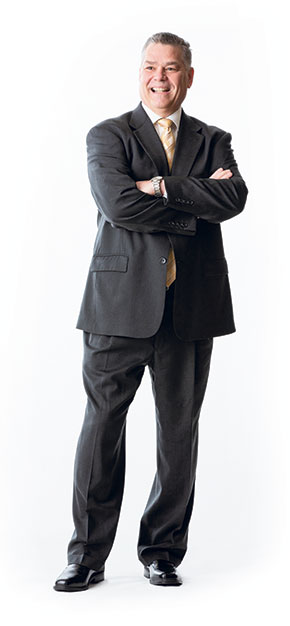 Jeff Basolis, General Manager, TriMark Gill Marketing It also will facilitate centralized purchasing and supply chain standardization across the country and will enable TriMark to better manage logistics, providing insights into which of its facilities may be most efficient from which to ship. And it will bring what Hyman calls the “cool stuff,” such as instant electronic order verification, proof of delivery and credit memos, standardized account reporting and analyses tools, long available to national chains through various legacy division IT platforms, down to the regional, local and independent restaurant levels.
Jeff Basolis, General Manager, TriMark Gill Marketing It also will facilitate centralized purchasing and supply chain standardization across the country and will enable TriMark to better manage logistics, providing insights into which of its facilities may be most efficient from which to ship. And it will bring what Hyman calls the “cool stuff,” such as instant electronic order verification, proof of delivery and credit memos, standardized account reporting and analyses tools, long available to national chains through various legacy division IT platforms, down to the regional, local and independent restaurant levels.
According to Marlinn’s Siegel, who was tapped to lead the early stages of the new ERP system development and implementation, a major benefit once the rollout is complete will be the ability to present a single front to customers, as well as to leverage TriMark’s scale for their benefit, no matter their size or segment.
The next division slated for implementation is United East, followed by Strategic later this year. Within the next two years, TriMark expects that all divisions will be live on the new system.
The company is also working to improve efficiencies and streamline operations. In its Western Region, in particular, restructuring and consolidation are beginning to shift the landscape.
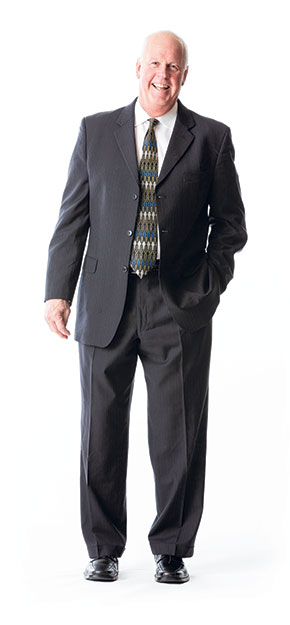 Allan Keck, President, TriMark USA Private Label Last year, for example, TriMark merged the design-build business of three California legacy divisions — Raygal, R.W. Smith and RobertClark — into a new TriMark Orange County division. It occupies a modern, 60,000-square-foot building in Irvine, Calif., and has roughly 210 employees, including legacy division staff members and TriMark employees in regional management positions. Gill Rimsza describes the new division as a future “center for excellence” for TriMark in the West.
Allan Keck, President, TriMark USA Private Label Last year, for example, TriMark merged the design-build business of three California legacy divisions — Raygal, R.W. Smith and RobertClark — into a new TriMark Orange County division. It occupies a modern, 60,000-square-foot building in Irvine, Calif., and has roughly 210 employees, including legacy division staff members and TriMark employees in regional management positions. Gill Rimsza describes the new division as a future “center for excellence” for TriMark in the West.
 Tom Schrack, President, TriMark Hockenbergs TriMark also recently began reorganizing management of its Western Region by business unit and function — distribution and retail. Chef’s Toys, Economy and the distribution business of R.W. Smith now operate under the direction of Chris Homewood, newly appointed president of TriMark Distribution and Retail West.
Tom Schrack, President, TriMark Hockenbergs TriMark also recently began reorganizing management of its Western Region by business unit and function — distribution and retail. Chef’s Toys, Economy and the distribution business of R.W. Smith now operate under the direction of Chris Homewood, newly appointed president of TriMark Distribution and Retail West.
“It’s a new model that we’re looking at,” Hyman notes. “At TriMark Orange County, we combined the design-build functions of three divisions into one entity. In TriMark Distribution and Retail, we are taking a similar tactic. Both Chefs’ Toys and Economy have retail, so we’re organizing by functionality within the entire region rather than simply by local geography or legacy division.”
Homewood, most recently vice president of operations at Ross Stores Inc., joined TriMark as Economy division president in 2018. The new Distribution and Retail West management team he now leads includes vice presidents of distribution; retail; operations/supply chain; purchasing and territory sales.
Consolidation has taken place in the Midwest Region as well, albeit on a smaller scale. Following the acquisition of Hockenbergs in 2017, that division’s Lincoln, Neb., office was closed and a new TriMark Minnesota division was created, bringing three area operations together into a new facility in Rochester.
“There was a St. Cloud location that was originally part of Strategic,” says Wienclaw. “And Hockenbergs had two locations in Minnesota. They were all within 60 miles of each other. Bringing them together in one facility will help us be able to accomplish more strategic, organic growth in that market.”
Still other new initiatives have TriMark focusing sharply on profitability. Over the past year, it has launched private-label programs for equipment and tabletop items, as well as a new supply chain initiative. In addition to more centralized purchasing, that initiative includes bringing end-to-end logistics management in-house.
“We’ve hired a national vice president of logistics and now manage the entire process ourselves,” Hyman notes. “We’re seeing significant savings. We do a better job getting the product to the customer in a more timely fashion with less damage and fewer mistakes and for less money.”
At the corporate level, the company is also developing a program designed to help its divisions in the areas of recruiting, hiring and training. Called TriMark University, it’s being championed by Thibert and Andrew Foster, the company’s chief human resource officer. Thibert says it will be designed in part by combining the best of what’s currently done in individual TriMark divisions with new approaches to create a “supercharged” program with elements of both virtual and in-person training.
“One of the biggest problems in our industry is finding and training 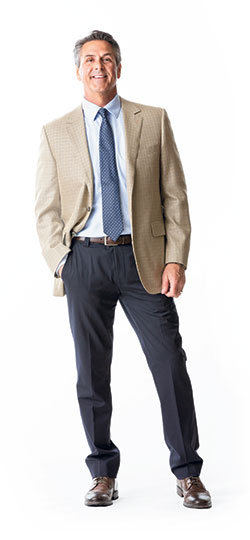 Tim Schrack, Executive Vice President, TriMark Hockenbergs people,” Hyman says. “We open 4,000 restaurants every year, any of which we have designed, project managed and installed. There’s no school to train people how to do that. TriMark University is a significant initiative designed to help meet the very tough challenge of finding and preparing the people we will need to help us continue to grow.”
Tim Schrack, Executive Vice President, TriMark Hockenbergs people,” Hyman says. “We open 4,000 restaurants every year, any of which we have designed, project managed and installed. There’s no school to train people how to do that. TriMark University is a significant initiative designed to help meet the very tough challenge of finding and preparing the people we will need to help us continue to grow.”
There’s little doubt that the company will, indeed, continue to grow — particularly as some of its big new moves bear fruit and as the industry continues to consolidate. Indeed, Hyman casually claims that TriMark USA will before long be a $4 billion company. It’s an eyebrow-raising figure, to be sure, but it’s not a pie-in-the-sky, casual claim to him. It’s a goal, and he has a plan for how he and his team will achieve it. Stay tuned.
Snapshot: TriMark USA
- Ownership: Centerbridge Partners L.P., TriMark management
- CEO: Jerry Hyman
- 2018 Sales: $1.97 billion
- Divisions: 14
- Employees: 3,100
- Salespeople: 700 outside, 200 inside
- Sales per Business Day: $7 million
- Product Mix: 70% equipment and projects, 30% supplies
- Customer Mix: 40% national account chains, 25% independent restaurants; 35% other (noncommercial, government, e-commerce, etc.)
- Facilities: 66 buildings, 3 million square feet, 270 loading docks
- Trucks: 200
- Buying Groups: NexGen (co-founded by TriMark USA), ABC, SMA



